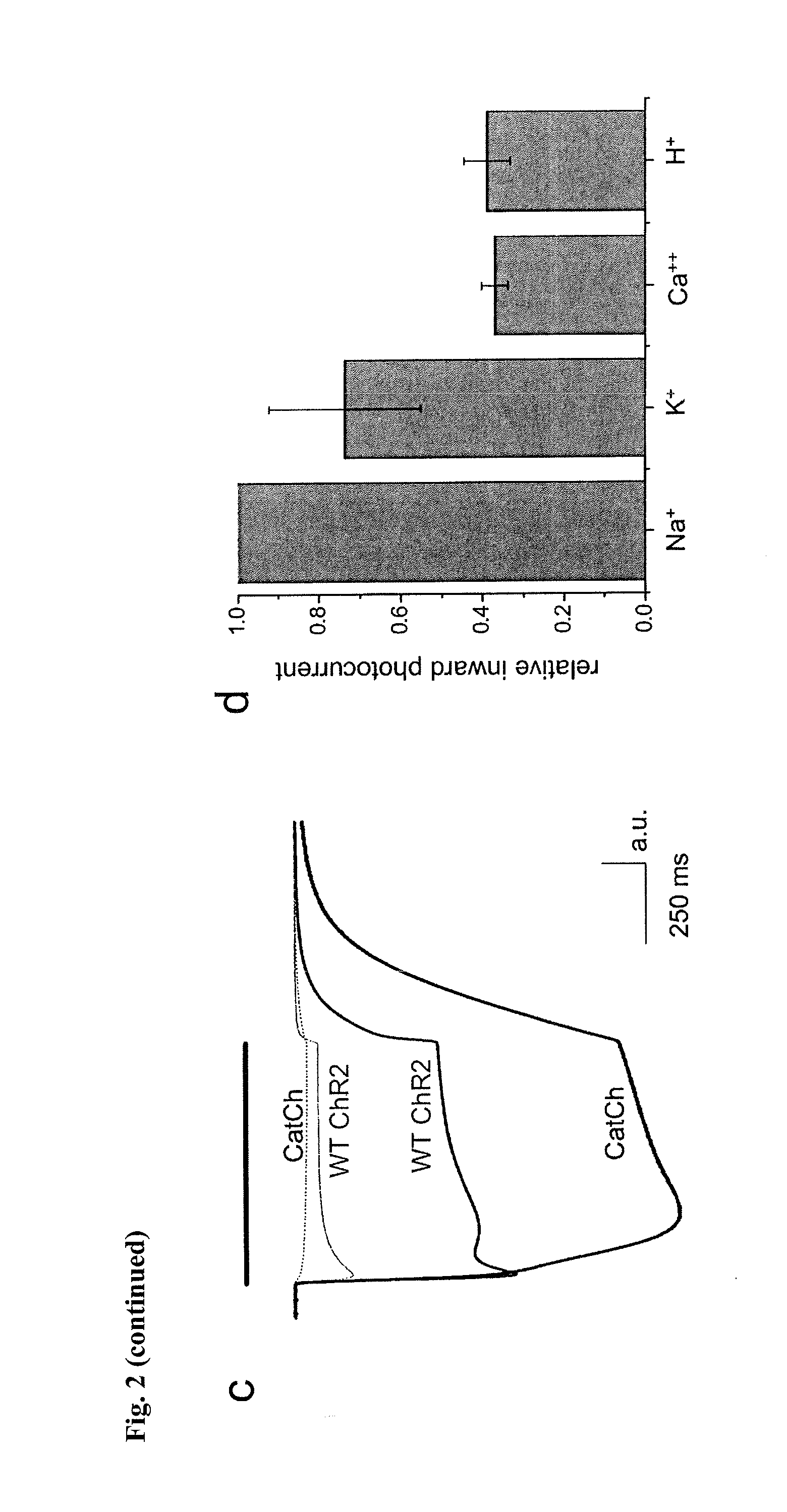Mutant channelrhodopsin 2
a technology of channelrhodopsin and mutant channelrhodopsin, which is applied in the field of mutant channelrhodopsin 2, can solve the problems that the slow closing kinetic remains a limiting factor for their applicability, and achieve the effects of enhancing ca++-permeability, indirect increase of light-sensitivity of a neuron, and increasing ca++-permeability
- Summary
- Abstract
- Description
- Claims
- Application Information
AI Technical Summary
Benefits of technology
Problems solved by technology
Method used
Image
Examples
examples
Construction and Biophysical Characterization of CatCh
[0060]In contrast to previous approaches, the inventors' objective was to identify residues within WT ChR2 whose mutations modify cation permeability. The inventors focused on the third transmembrane domain as several mutated residues within this domain have been shown to alter the photocycle and the gating of the channel (FIG. 1)5-7,12. Each residue from Arg115 to Thr139 was individually replaced by cysteine and screened for functional changes in Xenopus laevis oocytes.
[0061]Spectroscopy.
[0062]CatCh was expressed in and purified from Pichia pastoris as described before5,13. Flash-photolysis studies were performed and absorbance changes were measured after excitation of a 10 ns laser flash from an excimer pumped dye laser (450 nm, 2-3 mJ)13.
[0063]The L132C (CatCh) mutation displays significant alterations in the amplitude and shape of the current traces.
[0064]HEK293 Cell Culture and Molecular Biology.
[0065]C-terminally truncated ...
PUM
| Property | Measurement | Unit |
|---|---|---|
| stimulation frequency | aaaaa | aaaaa |
| stimulation frequency | aaaaa | aaaaa |
| intrinsic spike frequency | aaaaa | aaaaa |
Abstract
Description
Claims
Application Information
 Login to View More
Login to View More - R&D
- Intellectual Property
- Life Sciences
- Materials
- Tech Scout
- Unparalleled Data Quality
- Higher Quality Content
- 60% Fewer Hallucinations
Browse by: Latest US Patents, China's latest patents, Technical Efficacy Thesaurus, Application Domain, Technology Topic, Popular Technical Reports.
© 2025 PatSnap. All rights reserved.Legal|Privacy policy|Modern Slavery Act Transparency Statement|Sitemap|About US| Contact US: help@patsnap.com



